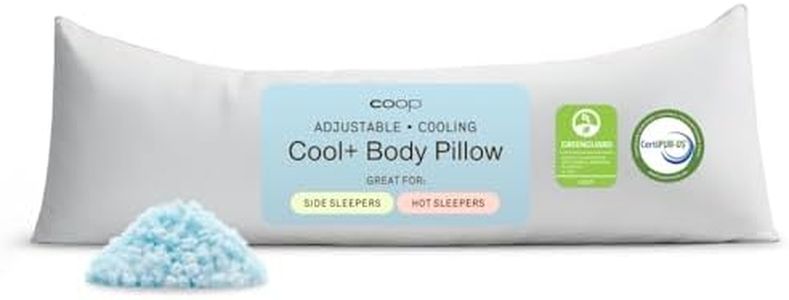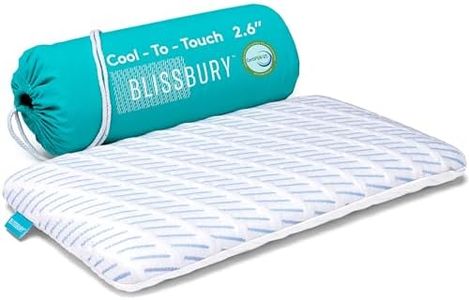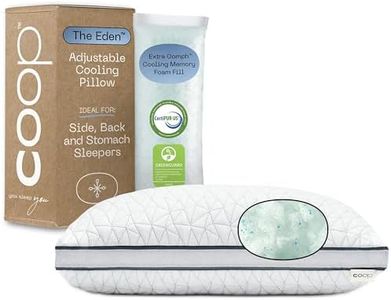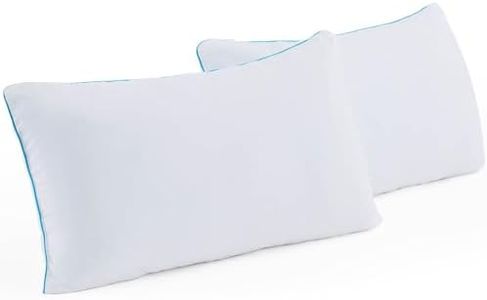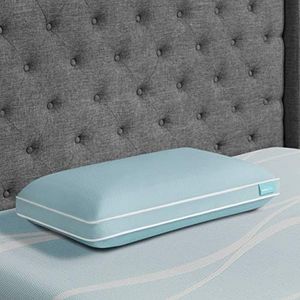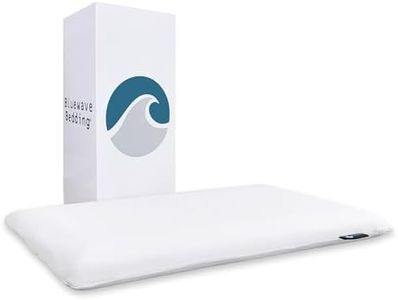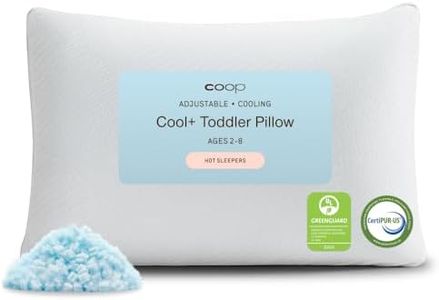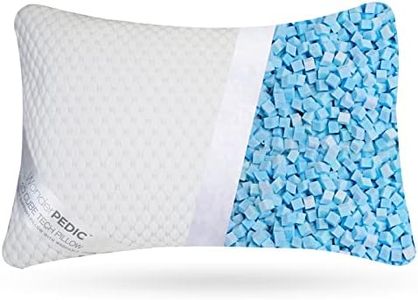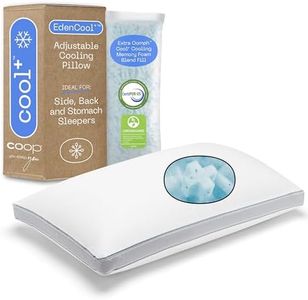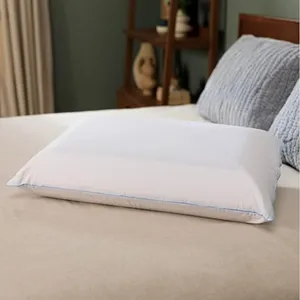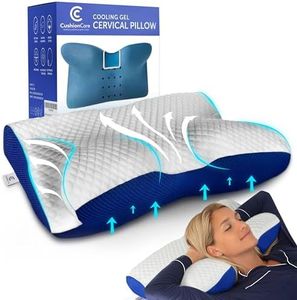We Use CookiesWe use cookies to enhance the security, performance,
functionality and for analytical and promotional activities. By continuing to browse this site you
are agreeing to our privacy policy
10 Best Cool Gel Pillows
From leading brands and best sellers available on the web.Buying Guide for the Best Cool Gel Pillows
Choosing the right cool gel pillow can make a big difference in your quality of sleep. These pillows are designed to keep you cooler during the night and provide support for your head and neck. Before making a purchase, it helps to know which features matter most and how they might affect your comfort. Identifying what you prioritize—whether it's firmness, size, or cooling power—will help you find a pillow that matches your sleeping preferences and nighttime needs.Gel DistributionGel distribution refers to how the cooling gel is spread within the pillow. There are typically solid layers, infusions, or beads. Solid layers often provide the strongest and most consistent cooling effect, beads or infusions mix with the fill material and can feel more subtle. If you get hot easily or live in a warm climate, a pillow with a solid gel layer might serve you best, while more modest gel infusions work well for occasional overheating.
Pillow Fill MaterialThe fill material is what the rest of the pillow, besides the gel, is made from—commonly memory foam, shredded foam, or fiber. Memory foam pillows mold closely to your head and neck for support but can sometimes trap heat unless gel-cooled, while shredded foam and fiber pillows tend to be softer and more adjustable. Back or side sleepers often prefer the firm support of memory foam, while stomach sleepers or those wanting a softer feel might opt for fiber or shredded foam.
FirmnessPillow firmness measures how soft or supportive the pillow feels. Soft, medium, and firm are the typical ranges. Soft pillows compress easily, medium strike a balance, and firm pillows hold their shape. If you sleep mainly on your side and need support for your neck, a firmer pillow is ideal. Back sleepers may do best with a medium firmness, while stomach sleepers often prefer a plush, soft pillow to avoid neck strain.
Loft (Height)Loft is the height of the pillow when laid flat. Low, medium, and high lofts cater to different needs: low for stomach sleepers to avoid neck arching, medium for back sleepers, and high for side sleepers to fill the space between neck and shoulder. Your body size and preferred sleeping position are the best guides—choose a height that keeps your neck aligned with the rest of your spine.
Cooling EfficiencyCooling efficiency is how well the pillow actually regulates temperature through the night. Some pillows only feel cool at first touch, while others dissipate heat through ventilation holes or upgraded gel technology for lasting coolness. If you wake up hot or sweat during the night, a pillow with advanced ventilating features may be ideal. Lighter sleepers in mild climates may not need the most powerful cooling tech.
Cover MaterialThe cover material is the fabric that encases the pillow, affecting both comfort and breathability. Cotton and bamboo are soft and allow more airflow, while some synthetic covers are treated to wick away moisture. If you have sensitive skin or allergies, natural fibers might suit you best. If reducing sweat is a priority, look for covers with moisture-wicking properties.
SizeSize refers to standard, queen, or king pillow dimensions. Standard fits most beds and is easiest to manage, while queen and king offer wider surfaces for people who move around or have larger beds. Pick a size that matches your mattress and sleeping habits, making sure the pillow fits comfortably in your bed space and pillowcases.
